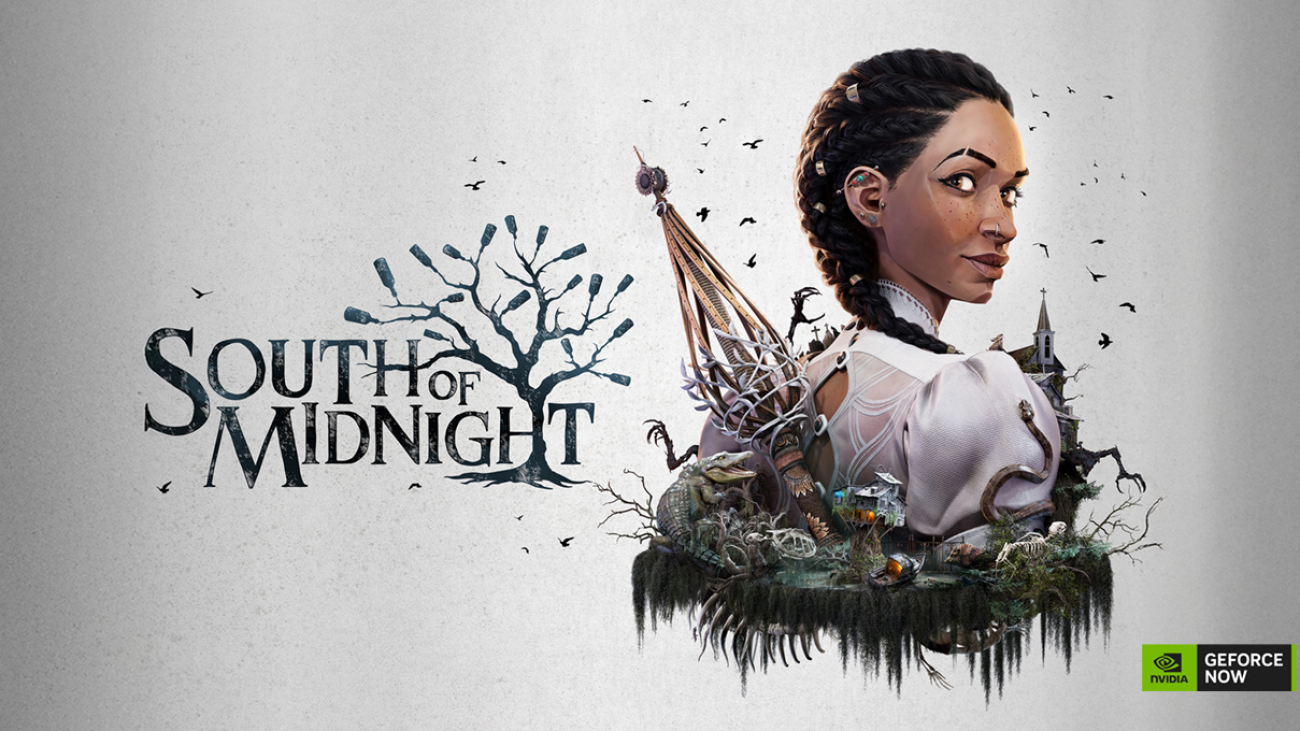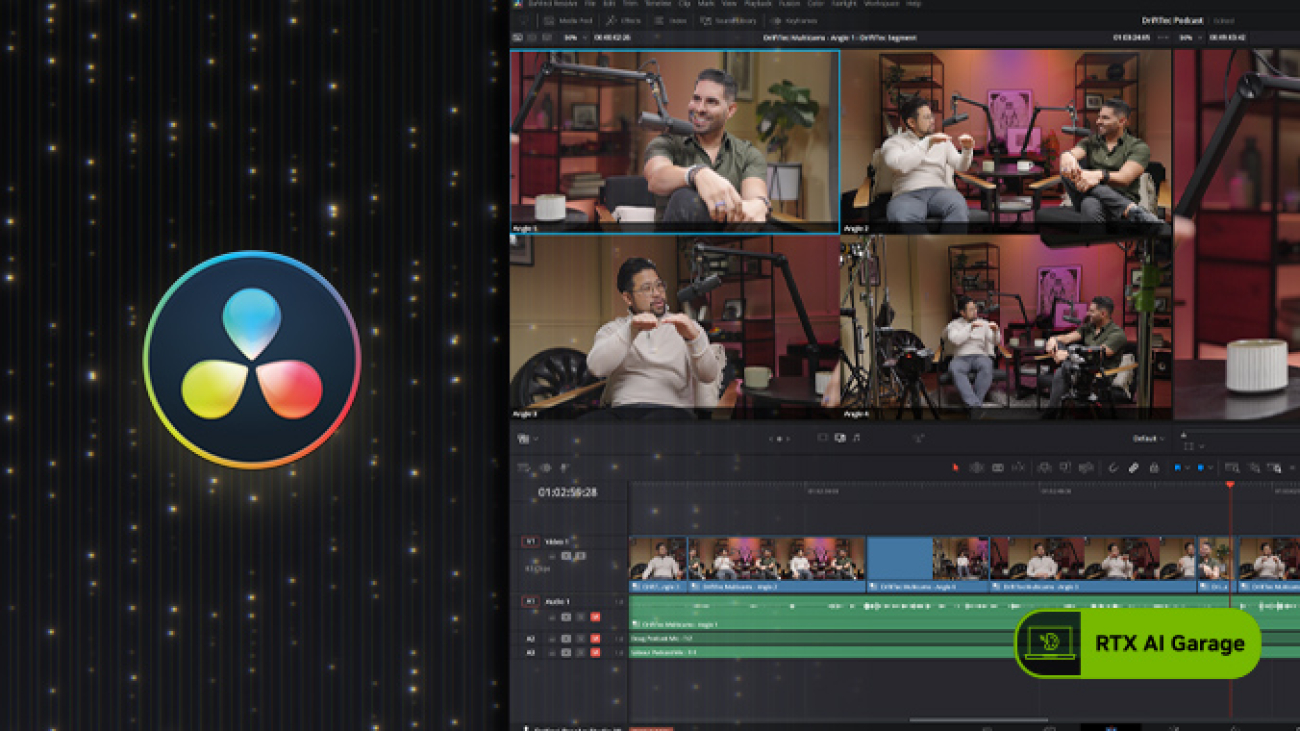Get ready to explore the Deep South. South of Midnight, the action-adventure game from Compulsion Games, launches today on GeForce NOW. Following last week’s launch of Advanced Access in the cloud, GeForce NOW members can now pick up where they left off or dive into the adventure for the first time.
It leads six games available in the cloud this week.
Plus, catch the newest update from Epic Games’ Fortnite and miHoYo’s Honkai: Star Rail v3.2, just in time to celebrate the game’s second anniversary.
Unleash the Magic
South of Midnight, a captivating third-person action-adventure game, is set against the backdrop of a Gothic fantasy version of the American Deep South. Step into the shoes of Hazel, a young woman who embarks on a journey to find her missing mother and discovers her unique abilities as a Weaver — a magical individual who can mend broken bonds and spirits. Throughout her quest, Hazel encounters intriguing mythical creatures inspired by Southern folklore, explores surreal landscapes and unravels deep family secrets.

Blending mesmerizing visuals with innovative gameplay mechanics, South of Midnight combines traditional action-adventure elements with Souls-like combat and strategic spellcasting. Players use Hazel’s Weaver powers — such as Push, Pull and Weave — to tactically engage formidable enemies known as Haints, navigate challenging scenarios and solve intricate puzzles.
GeForce NOW members can jump straight into South of Midnight and be among the first to play by skipping the hassle of downloads or updates. Experience Hazel’s journey facing cryptid encounters with buttery-smooth frame rates and ultra-low latency — all without needing the latest hardware — using an Ultimate or Performance membership. Stream the magic, dodge the Haints and weave through this mythical adventure instantly in the cloud.
Everybody Jump
GeForce NOW members can jump right into games without waiting for patches or downloads, whether for a seasonal update or the latest in-game event. This week, Fortnite and Honkai: Star Rail fans can dive into plenty of new content from the cloud.

Global superstar and two-time GRAMMY award winner Sabrina Carpenter takes center stage in Fortnite Festival season eight with her eccentric brand of pop. Unlock her outfit, along with her “Juno” and “Nonsense” Jam Tracks, through the Music Pass or Shop. The Music Pass offers a mix of free and premium rewards for just 1,400 V-Bucks or through Fortnite Crew, with XP earned across all Fortnite modes.

The latest update in the cloud is Honkai: Star Rail Version 3.2, which celebrates the game’s second anniversary. There are two new five-star characters — Castorice and Anaxa — and players can experience anniversary-themed events like “Star Rail WORLD” and a Light Cone giveaway. The update also introduces a revamped banner system for better character pull customization, as well as reruns of fan-favorite characters and challenging new events that bring fresh bosses and gameplay mechanics.
Time to Celebrate

Commandos: Origins is launching in the cloud this week for members to stream. Head on a mission that’ll shape the fate of the entire world, and witness the beginning of a legendary elite World War II force. The long-awaited sequel to the Commandos series brings players back to the foundations of the real-time tactics genre and the days of Jack O’Hara, aka the Green Beret, and his five companions, completing missions no others would dare to accept.
From the icy plains of the Arctic and the vast deserts of Africa to the western coastlines of Europe and the Eastern front, lead commandos to success in high-risk missions, guiding them in their fight for a free world.
Look for the following games available to stream in the cloud this week:
- South of Midnight (New release on Steam and Xbox, available on PC Game Pass, April 8)
- Commandos: Origins (New release on Steam and Xbox, available on PC Game Pass, April 9)
- The Talos Principle: Reawakened (New release on Steam, April 10)
- Backrooms: Escape Together (Steam)
- Diablo III (Xbox, available on PC Game Pass)
- Sultan’s Game (Steam)
To stream supported Battle.net games from PC Game Pass on GeForce NOW, including this week’s addition of Diablo III, read the knowledge article.
What are you planning to play this weekend? Let us know on X or in the comments below.
What’s the latest you’ve stayed up while gaming?
—
NVIDIA GeForce NOW (@NVIDIAGFN) April 9, 2025






